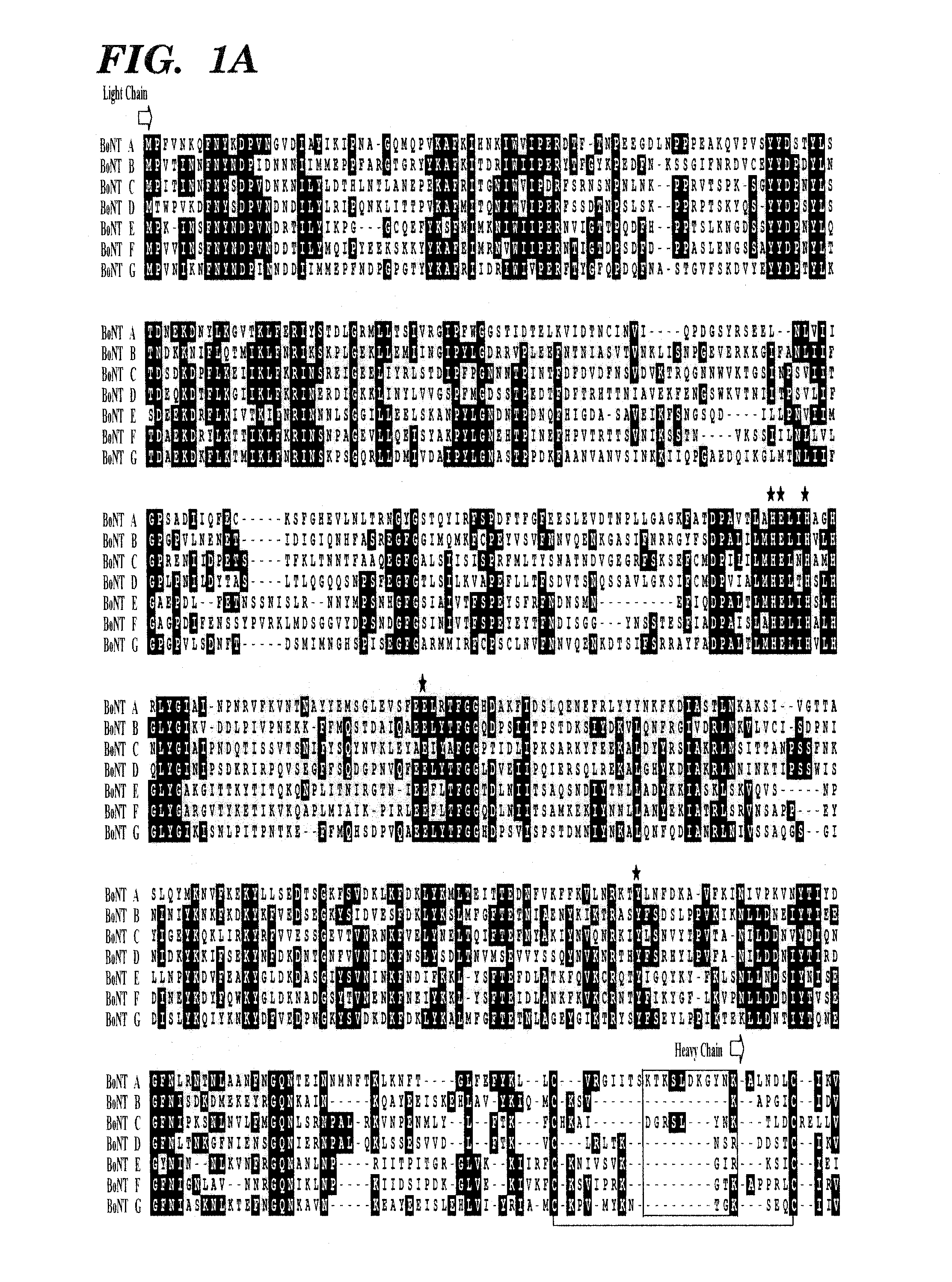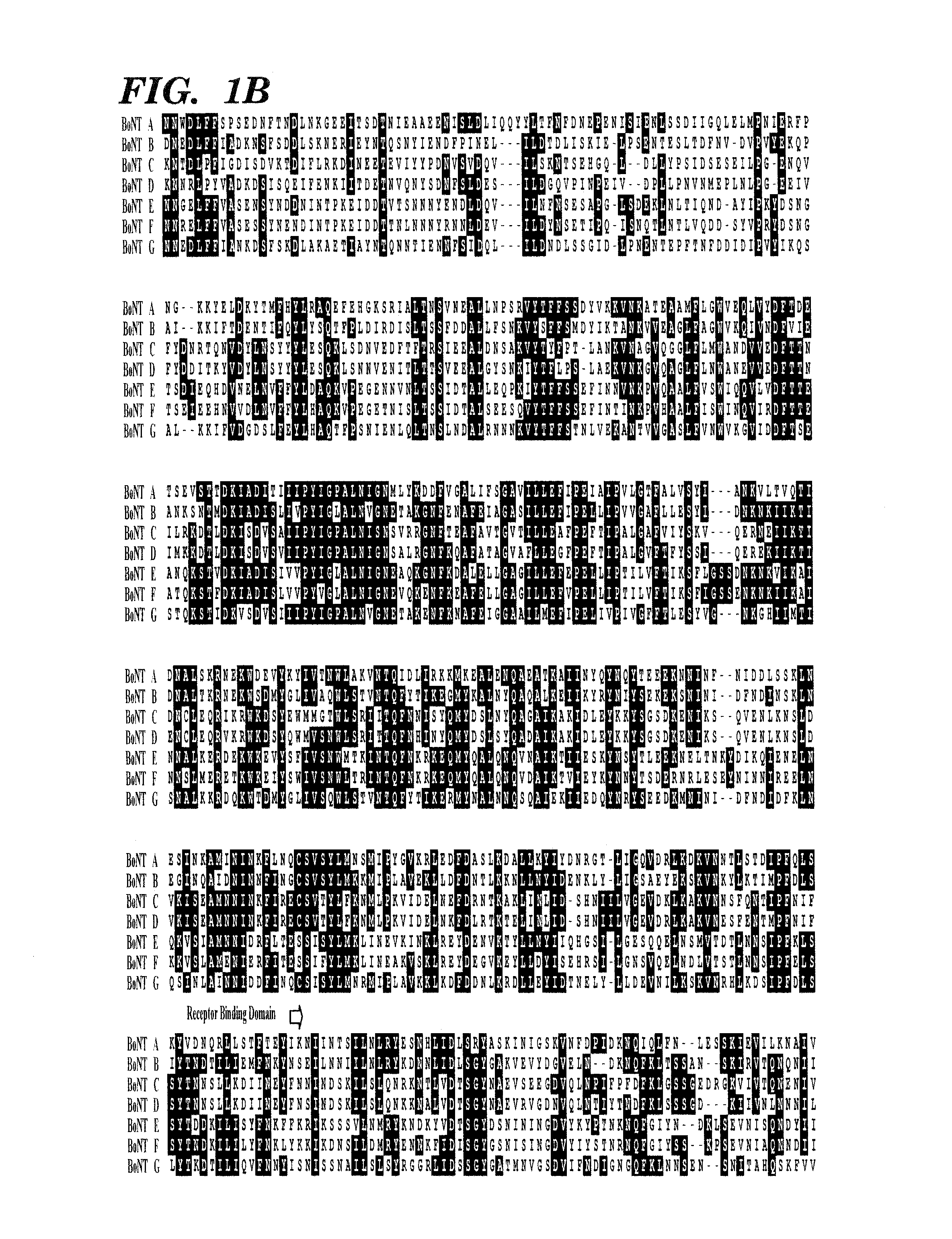Genetically engineered clostridial genes, proteins encoded by the engineered genes, and uses thereof
a technology of gene expression and gene expression, applied in the field of isolated clostridial propeptides and neurotoxins, can solve the problems of limited product effectiveness, no antidote or vaccine, no protective vaccine against clostridial neurotoxins has been approved, etc., and achieves the effect of optimizing therapeutic and biological properties
- Summary
- Abstract
- Description
- Claims
- Application Information
AI Technical Summary
Benefits of technology
Problems solved by technology
Method used
Image
Examples
example 1
SDS PAGE
[0111]Samples from all intermediate purification steps, as well as pure recombinant protein, were routinely separated and visualized on 8% separating polyacrylamide gels, according to Laemmli procedure (Laemmli, “Cleavage of Structural Proteins During the Assembly of the Head of Bacteriophage T4,” Nature 227:680-685 (1970), which is hereby incorporated by reference in its entirety). Protein bands were visualized by Bio-Safe Coomassie G-250 Stain (Bio-Rad, Cat. #161-0786).
example 2
Western Blotting
[0112]Samples for Western blot analysis were separated on 8% SDS-polyacrylamide gels. Followed by separation, proteins were transferred to the Hybond-C nitrocellulose membrane (Amersham Biosciences, Cat.#RPN303C) in 1×Tris / Glycine buffer (Bio-Rad, Cat.#161-0734) supplemented with 20% methanol at 100 volts for 2 hours, 4° C. After the transfer, membrane was rinsed in distilled water and protein bands were visualized by staining with 0.2% Ponceau S in 1% acetic acid for 1 minute. Dye from the membrane was washed away in the Tris-buffered saline / 0.1% Tween-20 buffer, pH 7.5, followed by incubation of the membrane in the blocking reagent (5% non-fat powdered milk in Tris-buffered saline / 0.1% Tween-20 buffer, pH 7.5) for 16 hours at 4° C. For immunodetection, membrane was incubated with primary antibodies / immune serum at 1:7,000 dilution, in 0.5% non-fat milk in Tris-buffered saline / 0.1% Tween-20 buffer, pH 7.5 at room temperature for 2 hours. Membrane was washed (6×5 min...
example 3
Evaluation of Recombinant Toxin Yield
[0113]The protein concentration of the purified recombinant protein fractions were determined using the BCA Protein assay reagent (Pierce, Cat.#23225) with bovine serum albumin used as standard.
PUM
| Property | Measurement | Unit |
|---|---|---|
| pH | aaaaa | aaaaa |
| area | aaaaa | aaaaa |
| volumes | aaaaa | aaaaa |
Abstract
Description
Claims
Application Information
 Login to View More
Login to View More - R&D
- Intellectual Property
- Life Sciences
- Materials
- Tech Scout
- Unparalleled Data Quality
- Higher Quality Content
- 60% Fewer Hallucinations
Browse by: Latest US Patents, China's latest patents, Technical Efficacy Thesaurus, Application Domain, Technology Topic, Popular Technical Reports.
© 2025 PatSnap. All rights reserved.Legal|Privacy policy|Modern Slavery Act Transparency Statement|Sitemap|About US| Contact US: help@patsnap.com



